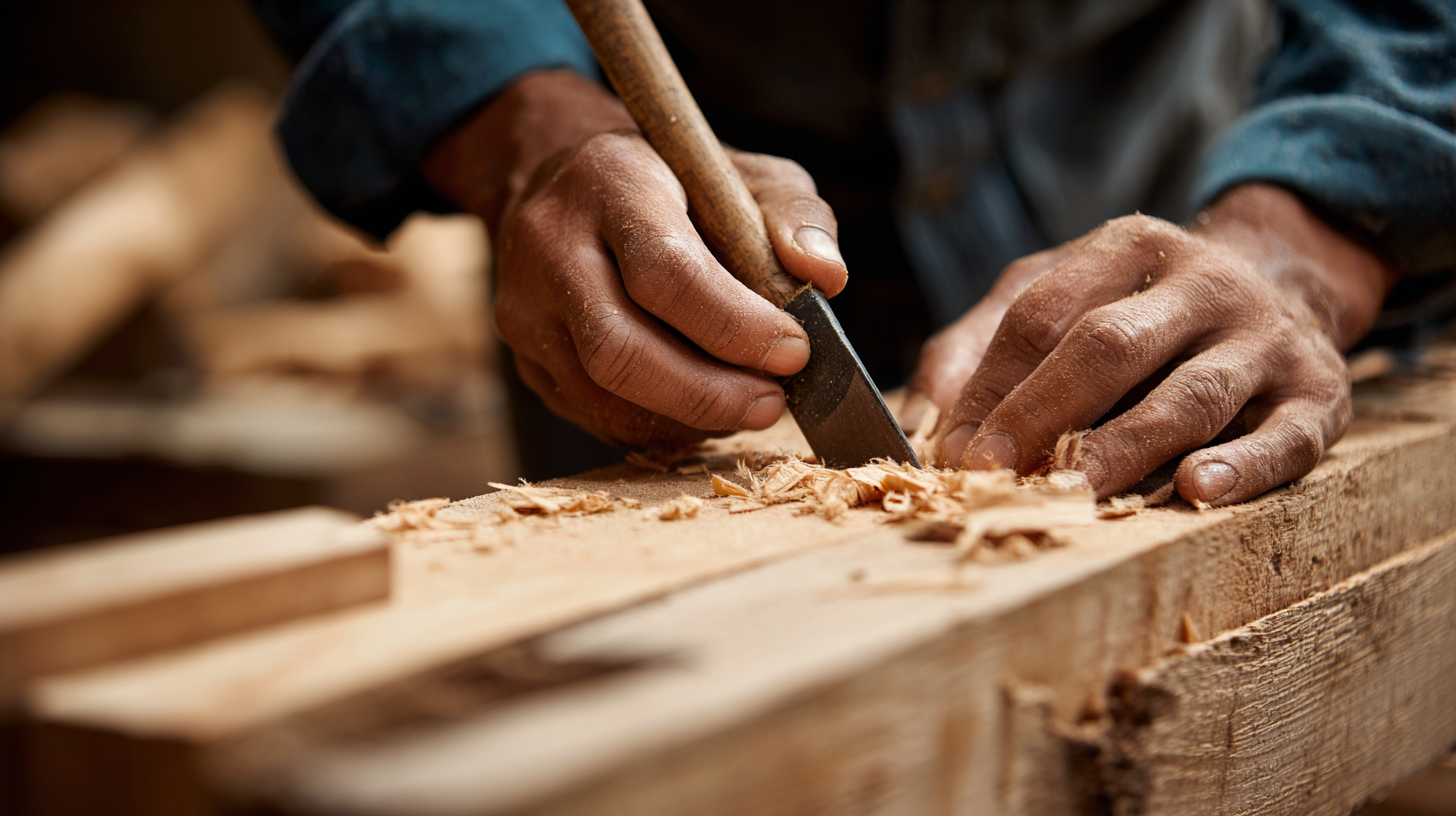Inquiry
Form loading...
When it comes to woodworking, selecting the right adhesive can significantly impact the overall strength and durability of a project. According to a report by the Adhesive and Sealant Council, the global demand for adhesives in construction is projected to exceed $50 billion by 2025, with wood adhesives playing a pivotal role due to their versatility and effectiveness. In particular, construction glue for wood has evolved, with formulations designed for specific applications, such as interior and exterior use, ensuring optimal performance under various conditions. Understanding the distinct characteristics and bonding strengths of different types of construction adhesives—such as polyurethane, PVA, and epoxy—can help woodworkers achieve more resilient and lasting joints. By choosing the best construction glue for wood, both amateurs and professionals can enhance their projects and ensure they withstand the test of time.

When embarking on wood projects, understanding the different types of construction glue is crucial to achieving strong and lasting bonds. Wood glues can be categorized into several types, including polyvinyl acetate (PVA), polyurethane, and epoxy resin. Each type offers unique properties suitable for various applications. For instance, PVA glue is favored for its versatility and ease of use in indoor projects, while polyurethane is ideal for outdoor applications due to its water resistance. Epoxy resin, on the other hand, provides a robust bond that can withstand significant stress and environmental challenges, making it perfect for structural applications.
As the construction industry evolves, the engineered wood market is projected to surpass USD 451.16 billion by 2034, with a compound annual growth rate (CAGR) indicative of the increasing preference for sustainable materials. Glue-laminated timber (glulam) is among the innovative solutions gaining traction, providing a low-carbon alternative that combines strength with aesthetic appeal. With advancements in lamination techniques and adhesive technologies, these engineered wood products not only enhance structural integrity but also align with the industry's push toward circular construction, optimizing resource use and promoting sustainability in building practices.
When selecting wood adhesives, several key features should be considered to ensure a strong and lasting bond. First and foremost, the type of glue plays a significant role in the adhesive's performance. Options range from PVA (polyvinyl acetate) to epoxy resin, each with its distinct bonding capabilities. PVA glue is favored for its ease of use and clean application, making it ideal for general woodworking tasks. On the other hand, epoxy resin provides superior strength and is suitable for high-stress applications where enhanced durability is essential.
Another important factor is drying time, which varies depending on the adhesive. Fast-setting glues can save time in projects, but some tasks may benefit from slower-curing options that allow for adjustments before the bond sets. Furthermore, evaluating the glue's resistance to elements such as moisture or heat is crucial, especially for projects in varied environments. Modern wood glues often come with improved formulations that provide better flexibility and strength, thus catering to a wide range of woodworking needs and ensuring that projects endure the test of time.
When it comes to achieving maximum bond strength in wood construction, the technique of applying construction glue is crucial. According to a report from the Adhesive and Sealant Council, a well-executed application technique can enhance bond strength by up to 50%. One effective technique is to ensure both bonding surfaces are clean and free of dust and debris, which can create weak points in the adhesive bond. A light sanding followed by a thorough wipe with a damp cloth can prepare the surfaces for a superior attachment.
Additionally, applying the right amount of glue is essential. Too little adhesive may not provide adequate coverage, while too much can lead to oozing and a messy finish. A uniform layer that completely covers the surfaces can provide optimal strength. It’s recommended to use a caulking gun for even application, ensuring that the glue is spread evenly across the wood’s surface.
**Tips:**
1. **Clamp the Joint:** After gluing, use clamps to hold the pieces together for at least 30 minutes. This ensures proper adhesion and significantly boosts bond durability.
2. **Mind the Temperature:** Most adhesives perform best at room temperature, with a range of 65°F to 85°F. Keeping the workspace within this range can lead to better results.

When it comes to using wood glue, avoiding common mistakes is crucial for achieving strong and durable bonds. One of the most frequent errors is applying too much glue. Many DIYers believe that more glue equals a stronger bond, but this can actually lead to excess squeeze-out, which weakens the joint. It's essential to apply a thin, even layer of glue to both surfaces that will be joined, ensuring complete coverage without overdoing it.
Another prevalent mistake is not clamping the pieces together properly. Clamping ensures that the parts are held tightly in place while the glue cures, but improper clamping can lead to weak joints. Be sure to use the right type of clamp and apply even pressure across the joint. Additionally, allow sufficient drying time according to the manufacturer's instructions before removing the clamps, as this is vital for achieving the ultimate strength of the bond.
Lastly, many overlook the importance of surface preparation. Wood surfaces should be clean, dry, and free from dust or grease before applying glue. Any contaminants can weaken the bond. Taking the time to sand the surfaces lightly can also improve adhesion, giving you a much stronger result.

When working with wooden surfaces, achieving a durable bond is essential to ensure the integrity and longevity of your projects. According to the American Society for Testing and Materials (ASTM), the right glue can enhance the shear strength of wood joints, achieving ratings that can exceed 3,000 PSI (pounds per square inch) under optimal conditions. To ensure a robust bond, consider the adhesive properties and drying time of various construction glues available today.
**Tip 1:** Always prepare the surfaces by sanding them lightly and cleaning them to remove any dust or grease. This preparation allows for better adhesive penetration and reduces the likelihood of weak spots in the bond. A study published in the Journal of Adhesion Science and Technology shows that contaminants can reduce bond strength by up to 50%.
**Tip 2:** Choose the appropriate type of glue for your project. Polyurethane and PVA (polyvinyl acetate) glues are popular due to their strong bonding capabilities and moisture resistance, suitable for both interior and exterior applications. As indicated by a report from the Wood Adhesives Association, PVA glues typically provide superior initial tack and are particularly effective for woodworking joints.
Utilizing these tips can significantly enhance the efficacy of your chosen construction glue, ensuring that your wooden projects are built to last.
This chart displays the shear strength of various types of construction glue used for wood bonding. As seen in the data, epoxy offers the highest shear strength, making it ideal for heavy-duty applications, while PVA and polyurethane are also strong choices for general woodworking projects.






